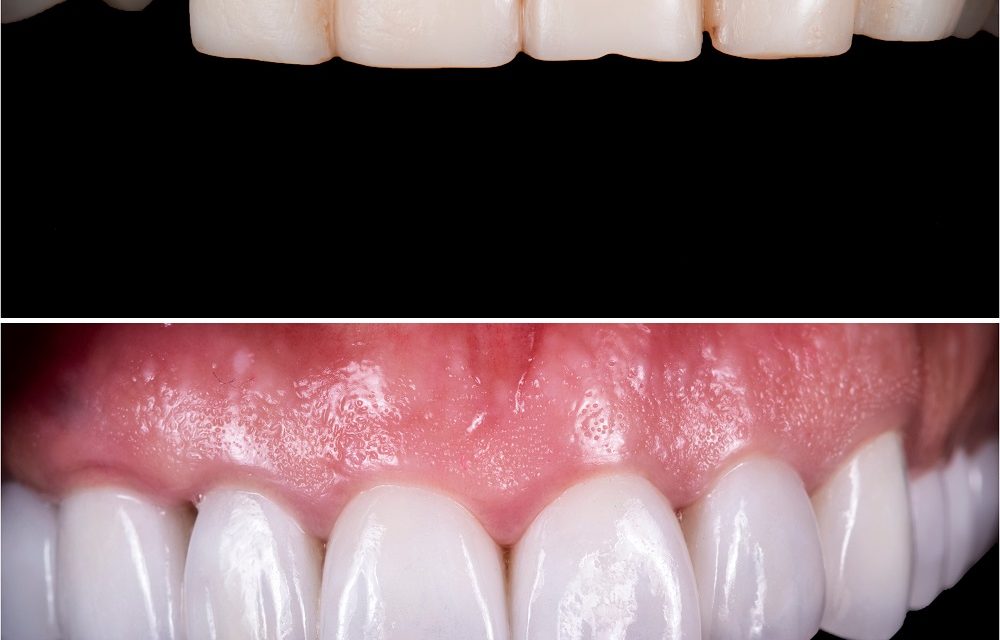This is Part 3 of this series; to see Part 2 click here.
Critical numbers in Smile Design
Width of Central Incisor: 8.5 mm
The ideal width of a central is statistically 8.5 mm with a range of +/- 0.5 mm, with females typically having less width than males. Width usually does not change with time, but length can. If a person grinds their teeth, the progressive wear that results can cause a significant decrease in length, causing the teeth to look shorter and wider as a result. This is due to the ratio of width to height, and if wear is significant, the cosmetic and functional ramifications can be severe.
Length of Central Incisor: 10.5 mm
The average length of the maxillary central incisor is 10.5-11 mm, which relates back to the “golden proportion”. The general rule to follow when determining the overall width of the upper anterior teeth follows an equation; if the width of the maxillary central is “X”, then the width of the lateral is “X-2”, and the width of the canine is “X-1.
Height to Width Ratio of Central Incisor: 75%
Generally, a pleasant aesthetic ratio of a central range between 70-80% with females typically having slightly more slender teeth. This can sometimes be adjusted in certain cases where facial features play a role and a chance to this ratio would result in a more compatible result.
Contact Height: 4, 3, 2 mm
The areas that contact between teeth should follow 4-3-2 mm measurements, starting with central to central being 4 mm, central to lateral being 3 mm, and lateral to canine being 2 mm. In addition, the incisal point of the contact should move apically as one moves from central to lateral to canine.
Occlusion
One of the most common mistakes dentists make when fabricating anterior restorations is the occlusion and specifically canine guidance. In ideal occlusion, canine guidance with immediate posterior disclusion is established in order to decrease the overall muscle activity and prevent restoration failure.
Shade
The final shade or color of the restorations is a key factor in the patient’s level of satisfaction. Selecting the desired shade and creating a natural result can be challenging. Many clinicians pick a single number from the shade guide, for example, 030, and forget about the other features that actually contribute more to a beautiful outcome. Transitioning that shade from cervical to incisal requires at least 2 other shades, with the cervical being naturally darker or deeper depending on the patient’s circumstances and facial features. In addition, respecting the canine relationship to other teeth may require a slight shade alteration and/or transition from the porcelain restoration to natural teeth if a full arch is not being restored. There are many other aspects that will impact the overall final result and the including desired facial surface texture, overall incisal translucency, hue and chroma, light reflection and variations in value, other effects of characteristics that may need to be added to match existing teeth, as well as shape, embrasures, and level of contour. All these features that may be considered as micro-aesthetic are actually critical to the final results and can make or break the case despite the clinician’s best skills and efforts. Attention must be paid at this stage as factors like rounding or sharpening of the distal incisal edge can make a massive difference to the overall look of the patient’s smile. Managing these factors and communicating with the patient when it comes to creating a natural appearance that follows their overall face is critical and often prevents disappointment and remakes when addressed early on.

